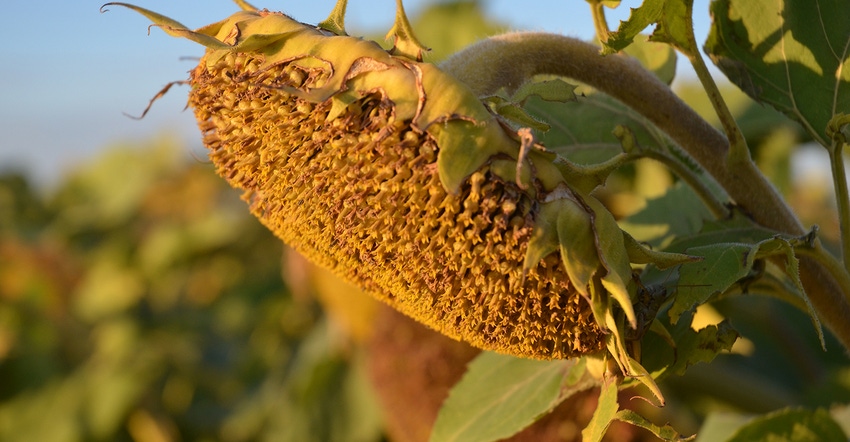October 3, 2017

By John Sandbakken
Harvest of the U.S. sunflower crop has just gotten started. The biggest unknown is the drought impact on production in the Dakotas, the largest sunflower producing states. A significant drop-off in yield will impact the market. In 2015 and 2016, the Dakotas experienced record sunflower yields, averaging over 1,800 pounds per acre. It is doubtful we’ll see those yields topped given the severe to exceptional drought conditions this year.
According to the September USDA Farm Service Agency crop acreage report, area planted to sunflower in 2017 decreased 16 % from 2016 and totals 1.33 million acres. Planted area of oil-type varieties, at 1.17 million acres, is down 17% from 2016. Planted acreage of non-oil varieties, estimated at 156,000 acres, is down 12% from last year. Initial estimates peg the U.S. sunflower crop at around 800,000 MT, which compares to last year’s total of 1.2 million metric tons (MMT). If realized, this level of production will create very tight ending stocks at the end of the 2017-18 marketing year. USDA will release its final acreage and production estimates in January.
Global sunflower production in 2017-18 is projected at 48.7 MMT; this figure is down about 1 MMT from last year. The reduction is mainly due to a smaller crop in Ukraine. Argentina, Turkey and Russia are expecting increased production. Global crush is projected to decrease slightly based on the lower production figure. Despite the lower crush, sunflower oil trade is forecast to rise, supported by larger carryover oil stocks and very strong demand in India, European Union, North Africa and the Middle East. Ending seed stocks are expected to hit a two-year low representing only 7.3% of annual usage.
The rally in bird food prices this summer, which were as high as $22 per cwt, led to a lot of crop being traded in August and September ahead of harvest. This filled the nearby pipeline, and depending on the size of the 2017 crop, seed prices could drift lower as harvest deliveries arrive at plants and farmers pick up the selling pace in the next couple of months. After the initial harvest delivery period, prices will follow demand news.
This year’s decreased sunflower acres, and the opportunity it poses; has put sunflower into the discussion at the local coffee shop when talking about crop options for 2018. Crush plants are expected to be out early offering new-crop NuSun and high-oleic contracts that have cash and/or act of God production clauses. They will want to regain the acreage lost this year, so new-crop sunflower prices are expected to be very competitive in relation to other crops.
Something else to keep in mind is oil premiums that are paid on sunflower. Oil premiums are offered at the crush plants on oil content above 40% at a rate of 2% price premium for each 1% of oil above 40%. For example, 45% oil content results in a 10% price premium, which pushes gross returns from oil sunflower even higher.
Learn more at sunflowernsa.com.
Sandbakken is executive director of the National Sunflower Association.
You May Also Like




